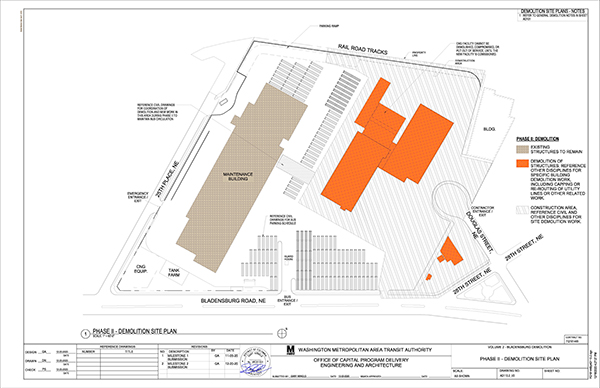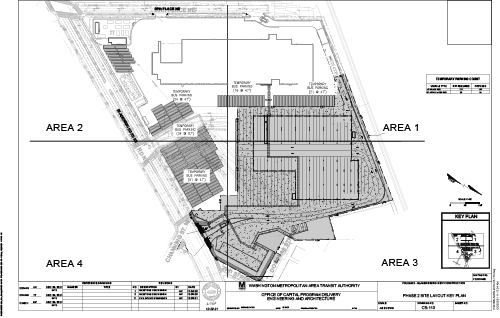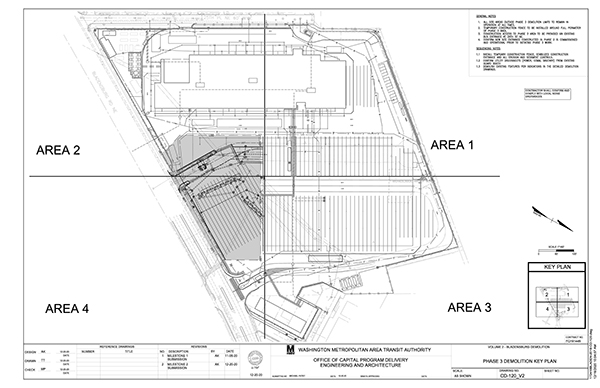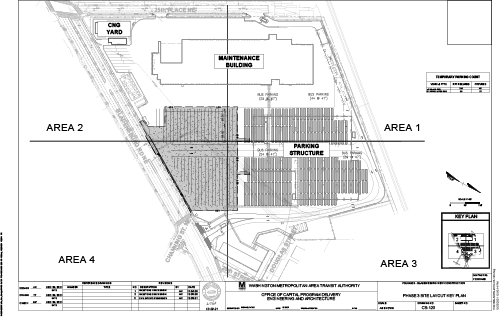Building the New Bladensburg
The Bladensburg Bus Garage, located in northeast DC, is a facility rich with history and strong ties to its neighboring communities. Metro plans to modernize and update the facility to increase environmental safety features, accommodate an expanded bus fleet, support Metro’s zero-emission bus plan and compliment the communities evolving landscape.
The project will be completed in phases to allow the facility to remain operational throughout construction of the new Bladensburg Bus Garage. The state-of-the-art facility will be able to hold up to 300 buses, have separate entrances for buses and employee vehicles, provide on-site employee parking, and make use of environmentally friendly technologies.
Project Schedule
WSP USA has been selected to provide project management and construction management services with contractor Hensel Phelps conducting construction services. The following timeline details Metro's process for design, review and approval, and construction surrounding the Bladensburg Bus Garage Replacement Project. Dates for the start of demolition and construction activities will be established upon conclusion of the design phase. All dates reflect the latest project status and will be updated as needed.
| Awarded Contract | April 21, 2020 |
| Notice to Proceed | July 9, 2021 |
| Completed Federal Environmental Review Process | July 2, 2020 |
| Complete Section 106 | March 2021 - May 2024 |
| Notice to Proceed for Demolition and Construction | Spring 2021 |
| Phase 1 Construction of Maintenance Facility | July 2021 – July 2024 |
| Start of Phase 1 Demolition | January 28, 2022 |
| Phase 2 Construction of Employee Parking Structure | August 2024 – February 2026 |
| Phase 3 Construction of Remaining Bus Parking | March 2026 – March 2027 |
| Project Completion | Spring 2027 |
A Phased Approach
A.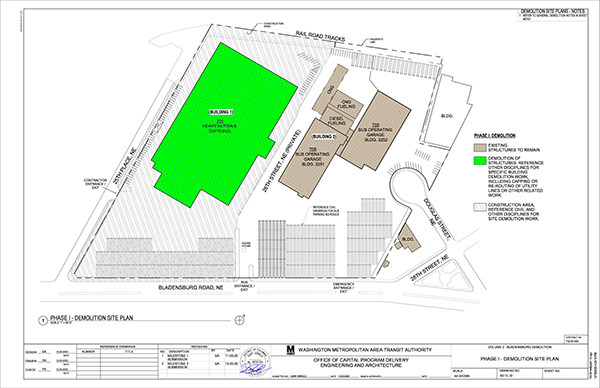 |
B.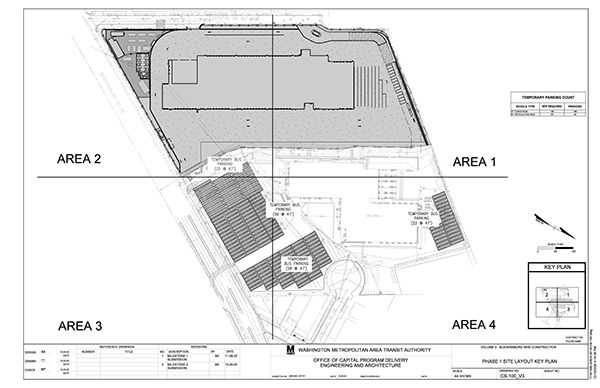 |
